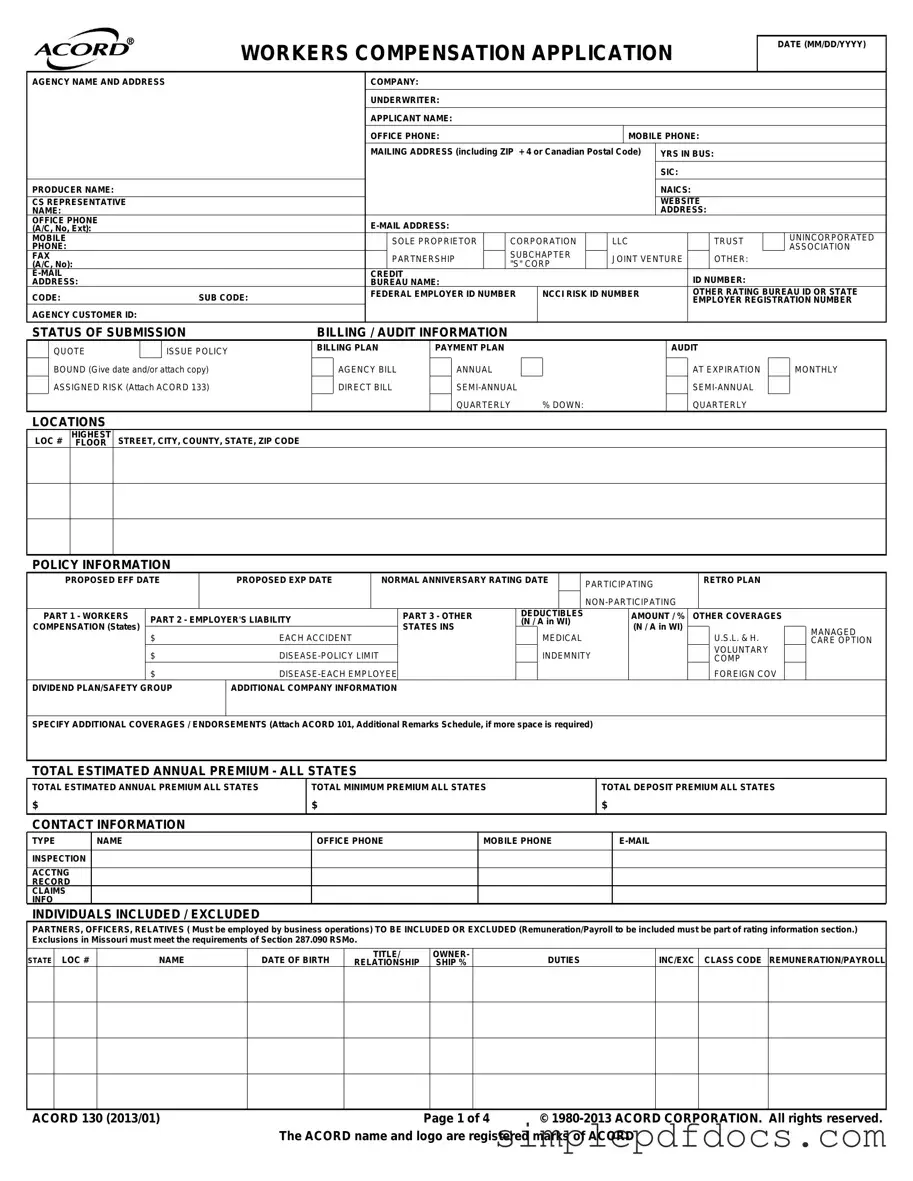The Acord 130 form plays a crucial role in the realm of workers' compensation insurance, serving as a comprehensive application that businesses must complete to secure coverage. This form captures essential information about the applicant, including their agency details, business structure, and contact information. It also requires specifics about the nature of the business operations, estimated payroll, and the number of employees. By detailing the history of any claims and prior insurance coverage, the Acord 130 helps insurers assess risk and determine appropriate premiums. Additionally, it includes sections for various coverage options, including employer's liability and optional endorsements, allowing businesses to tailor their insurance needs. Understanding how to accurately fill out this form can significantly impact a company's ability to obtain the right workers' compensation coverage, ensuring that both the business and its employees are protected in case of workplace injuries.
